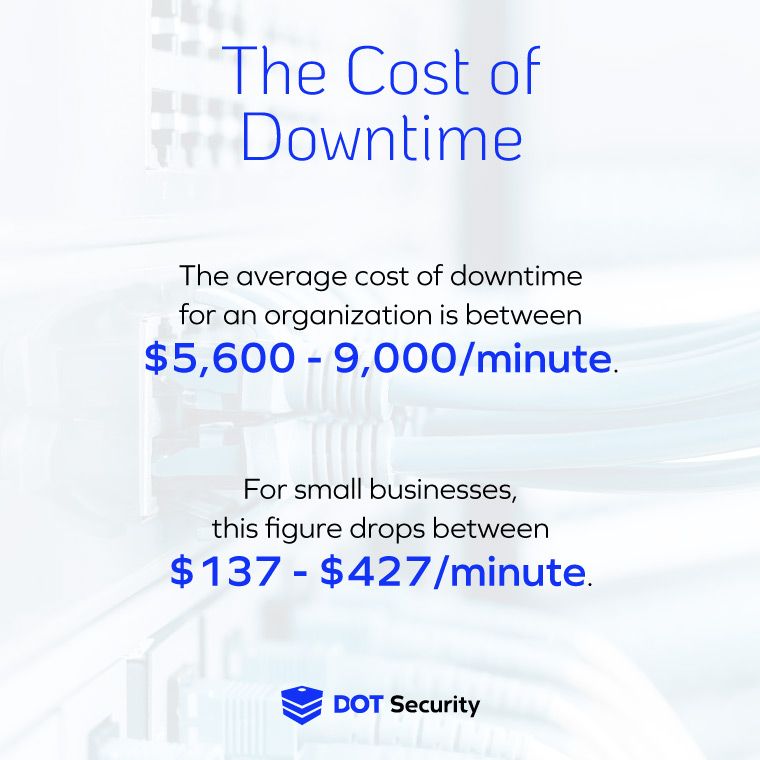Secure Data Protection
The Effect a Data Breach Can Have on an Organization
December 05, 2024
7 minute read

Data is the most valuable currency in the world, even more so than oil. From legal big data conglomerates to shady dark web dealings, our information is everywhere, and malicious actors will go to great lengths to access and monetize it. In this article, we take a look at the full range of effects a data breach can have on an organization.
Cybercriminals and malicious actors are constantly working to infiltrate new networks and oftentimes have no clue who they’re actually targeting. This is because they’re typically working off of IP addresses and won’t know what type of business they’re attacking until they’ve successfully breached.
Sign up for our newsletter!
Establishing a comprehensive cybersecurity strategy will mitigate vulnerabilities in your systems, making it harder for a threat-actor to successfully breach your network. In turn, this can deter attackers altogether as they might pivot to an easier, less prepared target.
No cybersecurity strategy can guarantee a 100% success rate, but the more defenses you have in place, the harder it is for threat-actors to take you on as a target. For more information, download DOT Security’s Common Vulnerabilities Checklist.
What Is a Data Breach?
Before we talk about the effects of a data breach on an organization or small business, it’s crucial to understand what it is.
A data breach is defined as: The unauthorized access and possession of sensitive, personal, or private information. In regards to cybercrime, the data breach often stems from malware, social engineering scams (like phishing emails), or malicious users navigating and exploiting technical vulnerabilities present in the network.
It means people who shouldn’t be accessing your data are doing so freely, and often times without detection.
For instance, the United States Patent and Trademark Office (USPTO) was the victim of a three-year-long data breach. The breach, which began in February 2020 and wasn't patched until March 2023, resulted in the exposure of over 61,000 patent applicant private residential addresses. While the USPTO has acknowledged the breach and claims no data was misused, you can imagine the devastation this type of lengthy breach could have on an organization.
How Do Data Breaches Happen?
A data breach can occur in several ways. Organizational leaders and decision-makers need cybersecurity policies in place that protect them from all directions.
Three of the core data breach cyberattacks criminals mount come in the form of:
- Malware
- Network vulnerability exploitation
- Social engineering.
Malware is malicious software that, once activated, infests your network. It halts operations, corrupts or encrypts your most sensitive files, and sometimes produces a ransom note – this specific type of malware is also called ransomware. Other forms of malware, however, are strictly designed to spy on your network and steal both company and staff information.
Network vulnerabilities can be exploited by savvy hackers. The more outdated your software, network, or systems, the more vulnerable you are. An immediate example of network vulnerability exploitation comes to us from WordPress and their popular plug-in Ultimate Member.
Malicious users found a backdoor in the Ultimate Member plug-in that allowed them to infiltrate websites, create shadow administrator accounts, and then usurp control over the entire site.
Social engineering scams are probably the cyberattack you’re most familiar with already. Phishing emails that aim to dupe users into compromising their credentials give hackers the key they need to get into your systems. From there, they can navigate almost undetected and wreak havoc on your network.
The Effects of a Data Breach
The effects of a data breach depend on factors like the duration of the breach, the information accessed, and the type of the cyberattack itself.
In the instance of a malware attack that shuts down your systems, the effects of the data breach could mean significant downtime, which is problematic for a few reasons. Firstly, downtime is a costly expense at $5,600/minute on average. Secondly, downtime can also impact your brand reputation and standing with current consumers.

In the event that your systems get hit by ransomware, the effects of the data breach could be far worse, losing access to vital files, an inordinate ransom, and again, consumers losing trust in your brand and your ability to keep their information protected.
Without a comprehensive and proactive cybersecurity strategy in place, a data breach can be detrimental for an organization.
Preventing a Data Breach in Your Organization
Unfortunately for cybersecurity professionals and business owners alike, there’s no universal defense program that guarantees 100% protection against cyberattacks. However, there are ways in which organizations can amp up their cyber defense and greatly reduce their cybercrime risk.
Partnering with a managed security services provider (MSSP) is one way to greatly mitigate cybercrime risk without dedicating the energy and resources into hiring an entire cybersecurity team in-house.
MSSPs give you access to an entire fleet of veteran cybersecurity professionals, automated 24/7 network monitoring, and state-of-the-art cybersecurity hardware and software.
Additionally, organizations can write up a comprehensive cybersecurity strategy, implement device management policies, and even enforce regular cybersecurity trainings to keep staff educated on current cyberthreats.
Staying Updated and Alert
Another good practice to build that can help your business and security staff stay on top of data security best practices is staying informed on what’s happening in the cybersecurity space at large. By reading the latest headlines and biggest cybersecurity news stories, you can learn what cyberthreats businesses are facing in the wild, how threat actors think, and what the latest technologies can provide.
If you want to learn about some of the biggest stories in cybersecurity from the past few months, head to the DOT Security Insights page and select the news filter.
Wrapping up on the Effects of a Data Breach
No one is 100% protected from cyberthreats. However, networks with more robust defense systems in place, modernized cybersecurity strategies, and security-literate staff members are much harder to penetrate for malicious users. Because hacking is often a speed game, the harder your system is to crack, the more likely cybercriminals are to look for easier prey elsewhere.
By partnering with a managed security service provider like DOT Security, your organization will be outfitted with the best cybersecurity technology on the market, used by veteran cybersecurity professionals who are here to keep your systems safe at all times.
Cybercriminals are waiting for the perfect opportunity to pounce. Don’t give them the chance by adding security to the gaps in your current defense strategy. For more information on mitigating cyber risk, download DOT Security’s Common Vulnerabilities Checklist.
